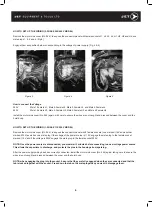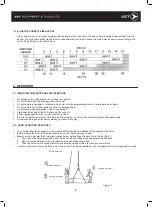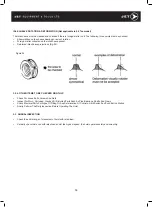
5
1.2.3. SWINGING OF THE HOIST IN NORMAL CONDITIONS
• The body of the hoist is designed to hang right under the hook or trolley and swings towards the load as the load sheave spins.
DON’T PREVENT THIS NATURAL SWINGING. (Figure 2)
1.2.4. DON’T USE LIMIT SWITCHES TO STOP THE HOIST IN NORMAL OPERATION
• The built-in over-winding limit switches of the hoist should be set to function only in an emergency. The hoist should be
installed so that the limit switches will never function in normal operation.
1.2.5. PREVENT THE HOIST FROM BEING EXPOSED TO RAIN
• Exposing your hoist to rain will significantly reduce the service life of the hoist. The hoist is designed to be safely operated even
in the rain, if the grounding work has been completely performed. But in order to prolong its service life, a cover should be
provided, if you install the hoist outside.
1.3. BEFORE CONNECTING POWER TO THE HOIST
1.3.1. POWER SETTING OF HOIST
• Make sure that the power supply corresponds to the hoist power setting. If your hoist is a dual-voltage type, NEVER FAIL TO
SET its wiring so that it will correspond to the voltage of power source, before supplying power.
Do not remove the motor cover or the gear side cover. If the hoist body is not on the ground. If removing the cover is
necessary while the hoist is suspended, use extra caution when removing the covers as the hook holding pin is held in
place by both covers. Removing the covers can potentially cause the hook holding pin to be removed causing the hoist
body to fall.
Figure 2


























